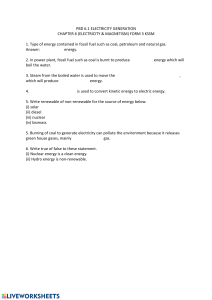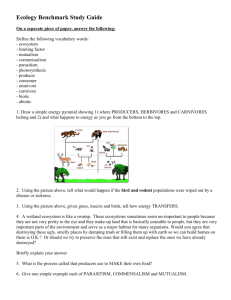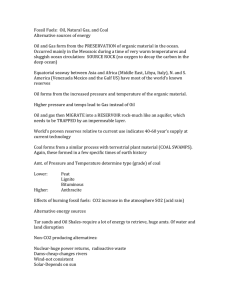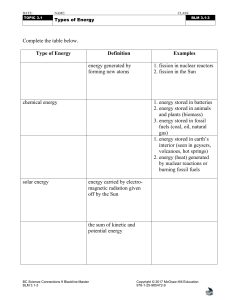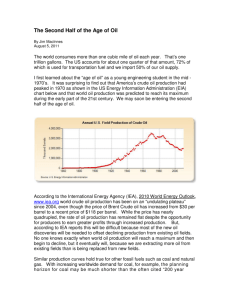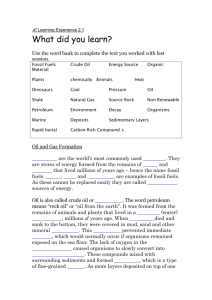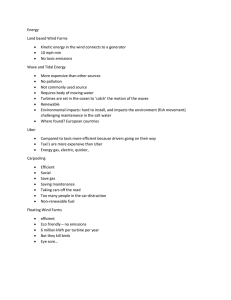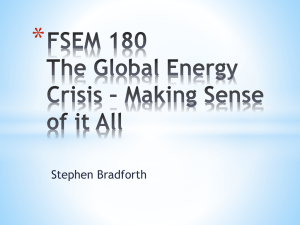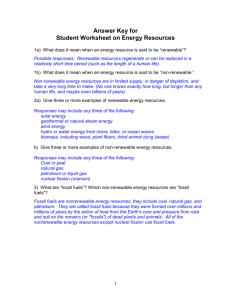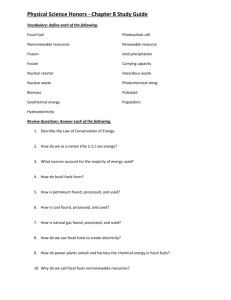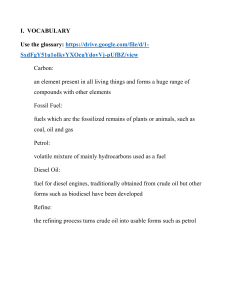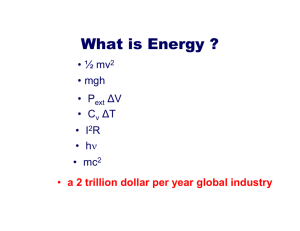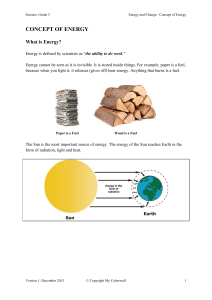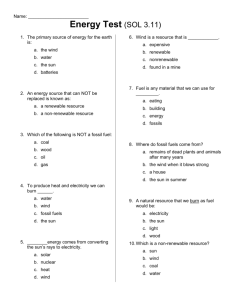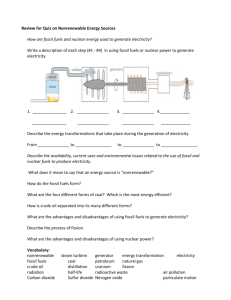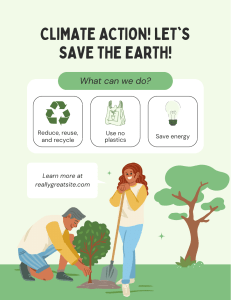Samantha Hansen`s Instructor Notes
advertisement
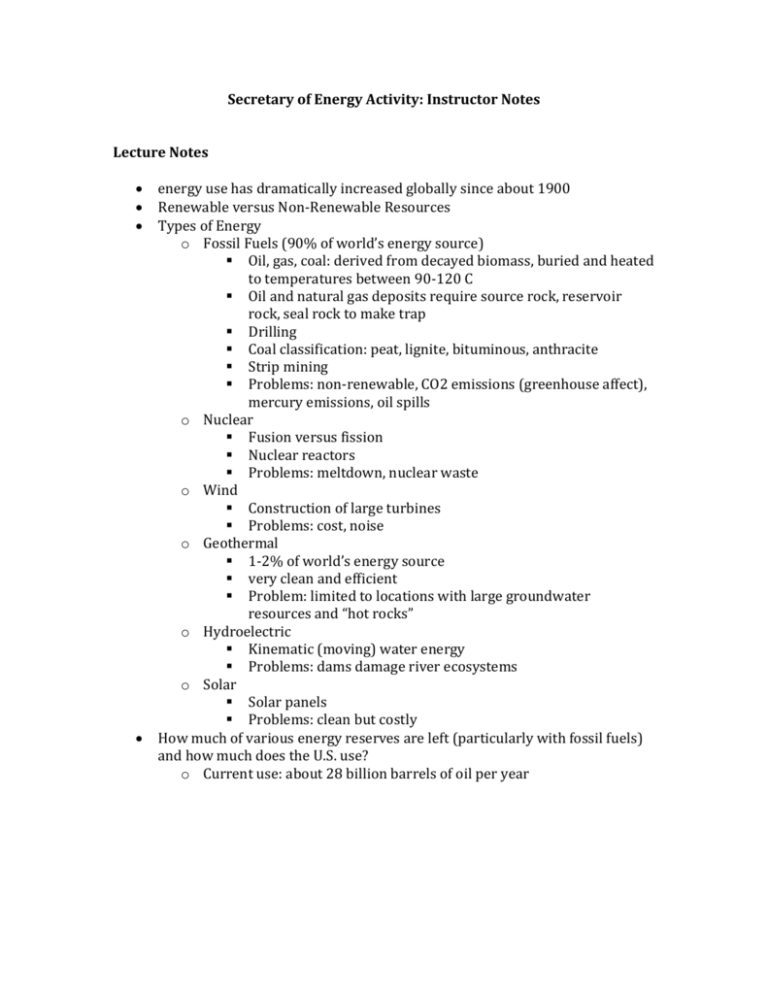
Secretary of Energy Activity: Instructor Notes Lecture Notes energy use has dramatically increased globally since about 1900 Renewable versus Non-Renewable Resources Types of Energy o Fossil Fuels (90% of world’s energy source) Oil, gas, coal: derived from decayed biomass, buried and heated to temperatures between 90-120 C Oil and natural gas deposits require source rock, reservoir rock, seal rock to make trap Drilling Coal classification: peat, lignite, bituminous, anthracite Strip mining Problems: non-renewable, CO2 emissions (greenhouse affect), mercury emissions, oil spills o Nuclear Fusion versus fission Nuclear reactors Problems: meltdown, nuclear waste o Wind Construction of large turbines Problems: cost, noise o Geothermal 1-2% of world’s energy source very clean and efficient Problem: limited to locations with large groundwater resources and “hot rocks” o Hydroelectric Kinematic (moving) water energy Problems: dams damage river ecosystems o Solar Solar panels Problems: clean but costly How much of various energy reserves are left (particularly with fossil fuels) and how much does the U.S. use? o Current use: about 28 billion barrels of oil per year
